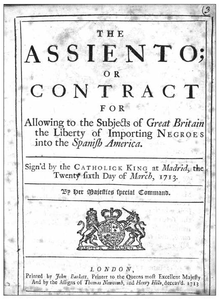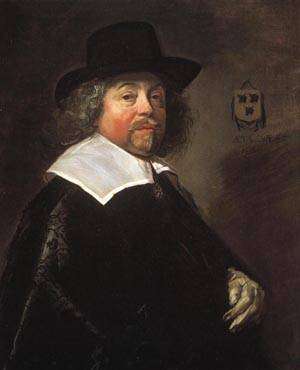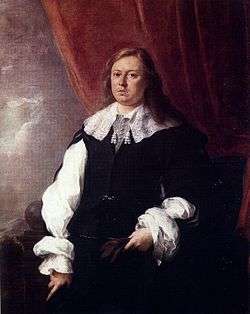Asiento

The Asiento was the permission given by the Spanish government to other countries to sell people as slaves to the Spanish colonies, between the years 1543 and 1834.
In British history, it usually refers to the contract between Spain and Great Britain created in 1713 that dealt with the supply of African slaves for the Spanish territories in the Americas. The British government passed its rights to the South Sea Company.
Terminology
The general meaning of asiento (from the Spanish verb sentar, to sit, and this from Latin sedere) in Spanish is "consent" or "settlement, establishment". In a commercial context it means "contract, trading agreement." In the words of Georges Scelle, it is "a term in Spanish public law which designates every contract made for the purpose of public utility…between the Spanish government and private individuals."[1]
In Habsburg Spain, asientos were a basic method of financing state expenditures: "Borrowing took two forms – long-term debt in the form of perpetual bonds (juros), and short-term loan contracts provided by bankers (asientos). Many asientos were eventually converted or refinanced through juros."[2]
Through an asiento, a trade relationship was established whereby a set of traders was given a monopoly over that route and/or product. In this case, it refers specifically to a monopoly over the trade of slaves between Africa and the Americas. According to the Encyclopædia Britannica, this asiento existed between the early 16th and mid-18th century.
Early trading

Initially, Portugal dominated the slave trade. Before the onset of the official asiento in 1595, the Spanish fiscal authorities gave individual asientoes to merchants, primarily from Portugal, to bring slaves to the Americas. For the 1560s most of these slaves were obtained in the Upper Guinea regions, especially in the Sierra Leone region where there were many wars associated with the Mande invasions.
Following the establishment of the Portuguese colony of Angola in 1575, and the gradual replacement of São Tomé by Brazil as the primary producers of sugar, Angolan interests came to dominate the trade, and it was Portuguese financiers and merchants who obtained the larger scale, comprehensive asiento that was established in 1595.
Angolan dominance of the trade was pronounced after 1615 when the governors of Angola, starting with Bento Banha Cardoso, made alliance with Imbangala mercenaries to wreak havoc on the local African powers. Many of these governors also held the contract of Angola as well as the asiento, thus insuring their interests. Shipping registers from Vera Cruz and Cartagena show that as many as 85% of the slaves arriving in Spanish ports were from Angola, brought by Portuguese ships. The earlier asiento period came to an end in 1640 when Portugal revolted against Spain, though even then the Portuguese continued to supply Spanish colonies.
In the 1650s Spain sought to enter the slave trade directly, sending ships to Angola to purchase slaves and toying with the idea of a military alliance with Kongo, the powerful African kingdom north of Angola. But these ideas were abandoned and the Spanish returned to Portuguese and then Dutch interests to supply slaves. Later in history, Britain and Holland dominated the slave trade. The slaves were sent mostly to the New World colonies.
The best captains paid careful attention to the feeding of their slaves - primarily cornmeal mush, seasoned with peppers. In 1688 Aphra Behn published Oroonoko, one of the first pieces of antislavery literature.[3]
South Sea Company

At the conclusion of the War of the Spanish Succession, the Treaty of Utrecht gave to Great Britain a thirty-year asiento or contract, to furnish (supply) 4800 slaves to the Spanish colonies and 500 tons of goods per year. This provided British traders and smugglers with potential inroads into the traditionally closed Spanish markets in America. Disputes connected with it led to the War of Jenkins' Ear (1739).
Similar patents in the English system were the Virginia Company, the Levant Company and the Merchant Adventurers' patent of trade with the United Provinces (essentially concurrent with the modern day Netherlands). A detailed and well written overview of the English system is given by Robert Brenner in "Merchants and Revolution".
Holders of the Asiento

- 1518-1527 - Laurent de Gouvenot (aka Lorenzo de Gorrevod or Garrebod), Governor of Bresse and majordomo of Charles I of Spain.[4][5]
- Outsourced to Domingo de Forne, Agustín de Ribaldo and Fernando Vázquez, all Genoese established in Seville.[6]
- 1528-1536 - The Welser family.[7]
- 1536-1595 - Liberalization.[8]
- 1595-1615 - Pedro Gomes Reinel (or Reynel).[9]
- 1602-1610 - João Rodrigues Coutinho, succeeded by Gonçalo Vaz Coutinho.
- November 5, 1611 - Juan Alfonso de Molina Cano for António Fernandes de Elvas.
- January 24, 1615 - Melchor Maldonado.
- 1615-1621 - António Fernandes de Elvas.
- February 2, 1622 - Gaspar de Monteser for António Fernandes de Elvas.
- 1623-1625 - Miguel Rodrigues Lamego.
- 1631-1640? - Melchor Gómez Angel and Cristóvão Mendes de Sousa.
- July 5, 1662 – 1669 Domingo Grillo and Ambrosio Lomelín will ship 24,000 slaves in seven years, assisted by the Dutch West India Company from Curaçao and the Royal African Company from Jamaica.[10]
- The asiento is ended because of mistrust.[11][12]
- King Charles II of England tries to lay hands on the asiento.
- 1670-1675 António Garcia, a Portuguese (and Sebastian de Síliceo his guarantee).[13][14]

- 1676-1679 Manuel Hierro de Castro, and Manuel José Cortizos, members of the Consulado de Sevilla. Spanish are no longer allowed to buy slaves on Curaçao.
- [Señor. El Maestro Fray Juan de Castro, Religioso de la Orden de Santo Domingo, dize : Que por el año de 1678 hollandose en la Ciudad de Cádiz, le solicitaron D. Baltasar Coymans, y Pedro Bambelle de Nacion Olandeses, para la disposicion de un Asiento, que se auia de hazer para comerciar à Indias, haziendole grandes ofertas…y auian de ser Españoles los que le auian de hazer ; y reconociendo…que se trataua de adulterarel comercio…]"
- 1680 Juan Barroso del Pozo, a former assistant Coymans (?) [15] and Nicolas Porcio, his Venetian son-in-law, became asentistas.
- 1682-1688 Juan Barroso del Pozo (-1683) and Nicolás Porcio succeeded in getting the asiento for 6.5 years. It was probably Porcio who encountered many financial difficulties in 1684 and was unable to make his payments to the crown, alleging that the local authorities in Cartagena were working against his interests.[16]
- February 1685-1688 Balthasar Coymans (1652-1686).[13][17] Coymans made an immediate payment towards some frigates for the Spanish navy being built in Amsterdam and an advance on the dues he would be liable for on goods imported to Spanish America.[16]
- Royal Order, signed 'El Rey', commanding Don Balthasar Coymans, Don Juan Barrosa & Don Nicolas Porzio to assemble ten Capuchin monks (Franciscan friars) from either Cadiz or Amsterdam for the purpose of sailing to the coast of Africa to buy slaves, to convert them to Christianity and sell them in the West Indies, 25 March 1685 Balthasar & Johan Coymans.[18]
- Carta de Rodrigo Gómez a [Manuel Diego López de Zúñiga Mendoza Sotomayor, X] Duque de Béjar informando de la concesión de un asiento de negros en el Río de la Plata a favor de Baltasar Coymans y pide recomendaciones personales para que su hijo Pedro sea empleado en ese negocio. Menciona también a Gaspar de Rebolledo, Juan Pimentel como Gobernador de Buenos Aires y a [Carlos José Gutiérrez de los Ríos Roha, VI] Conde de Fernán-Núñez. Antwerp, 1685-04-17.[19]
- July 1686. King Charles II of Spain starts an investigation into the legitimacy of the Asiento.[20] The asiento with B. Coymans is annulled.
- October 1686 The Dutch refuse to accept the "Junta de Asiento de Negros", a commission of dubious authority.
- There is a risk of war between France and Spain; Jamaica is becoming more important than Curaçao.[21]
- 1687-1688 Jan Carçau, or Juan Carcán a former assistant of B. Coymans, takes over the asiento.
- March 1688 Jan Carçao is put in prison in Cádiz, accused of fraud. In June 1688 the commission delivered an opinion the Dutch must recognize its authority before discussions could proceed.[22]
- 1688-October 1691 Nicolás Porcio.
- 1692-1695 Bernardo Francisco Marín de Guzmán
- 1695-1701 Manuel Ferreira de Carvalho representing the Real Companhia de Cacheu or Real Companhia da Guiné do Reino de Portugal.
- 1701-1713 Jean du Casse in name of the Compagnie de Guinée et de l’Assiente des Royaume de la France.[24]
- 1713-1750 South Sea Company.[25]
- 1750-1764 ???
- 1765-1772 Miguel de Uriarte in name of Aguirre, Aristegui, J.M. Enrile y Compañía, or Compañía Gaditana.
- 1773-1779 Aguirre, Aristegui y Compañía, or Compañía Gaditana.
See also
Sources
- Goslinga, C.Ch. (1985) The Dutch in the Caribbean and in the Guianas 1680-1791.
- David Marley (ed.), Reales asientos y licencias para la introduccion de esclavos negros a la America Espagnola (1676–1789), ISBN 0-88653-009-1 (Windsor, Canada. 1985).
- Postma, J.M. (2008) The Dutch in the Atlantic Slave Trade, 1600-1815 Cambridge University Press
References
- ↑ Johannes Postma, The Dutch in the Atlantic Slave Trade, 1600-1815 (Cambridge University Press, 1990), p. 29.
- ↑ Mauricio Drelichman and Hans-Joachim Voth, "Lending to the Borrower from Hell: Debt and Default in the Age of Phillip II, 1566-1598", p. 6.
- ↑ Wills, J.E. (2001) 1688. A global history, p. 52.
- ↑ Thomas, Hugh (1997) The Slave Trade. Simon and Schuster, 908 pages
- ↑ Dalla Corte, Gabriela (2006) Homogeneidad, Diferencia y Exclusión en América. Edicions Universitat Barcelona, 447 pages
- ↑ Dalla Corte, Gabriela (2006) Homogeneidad, Diferencia y Exclusión en América. Edicions Universitat Barcelona, 447 pages
- ↑ Cortés López, José Luis (2004) Esclavo y Colono. Universidad de Salamanca, 339 pages
- ↑ Cortés López, José Luis (2004) Esclavo y Colono. Universidad de Salamanca, 339 pages
- ↑ List in Spanish
- ↑ Collection Schimmel, Herbert & Ruth
- ↑ The slave trade: the story of the Atlantic slave trade, 1440-1870 Door Hugh Thomas, p. 213.
- ↑ The Genoese in Spain: Gabriel Bocángel y Unzueta (1603-1658): a biography by Trevor J. Dadson
- 1 2 http://www.danbyrnes.com.au/merchants/merchants7.htm
- ↑ Klooster, W. (1997): Slavenvaart op Spaanse kusten. De Nederlandse slavenhandel met Spaans Amerika, 1648-1701 in Tijdschrift voor de Zeegeschiedenis p. 127.
- ↑ Shaw, C.M. (199) The overseas Spanish Empire and the Dutch Republic before and after the Peace of Munster", In: De zeventiende Eeuw, 13 (1997), pp. 131-139.
- 1 2 Wills, J.E. (2001) 1688. A global history, p. 50.
- ↑ The Royal African Company door K. G. Davies
- ↑ http://www.invaluable.com/auction-lot/spanish-slavery.-charle-s-ii,-king-of-spain,-16-1-c-pwot4amd4d
- ↑ http://pares.mcu.es/ParesBusquedas/servlets/Control_servlet?accion=3&txt_id_desc_ud=3920099&fromagenda=N
- ↑ The transatlantic slave trade: a history door James A. Rawley, Stephen D. Behrendt
- ↑ Négoce, ports et océans, XVIe-XXe siècles: mélanges offerts à Paul Butel Door Silvia Marzagalli, Paul Butel, Hubert Bonin
- ↑ Wills, J.E. (2001) 1688. A global history, p. 51.
- ↑ The African slave trade and its suppression: a classified and annotated… By Peter C. Hogg
- ↑ Africans in bondage : studies in slavery and the slave trade
- ↑ 1911 encyclopedia Archived July 24, 2009, at the Wayback Machine.